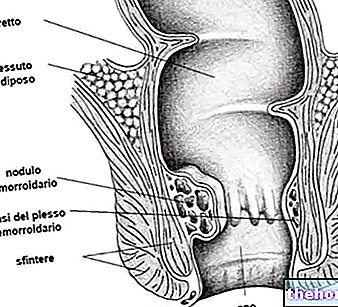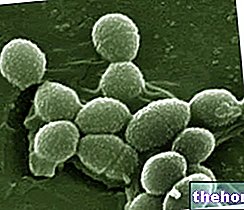Intestinal parasites are divided into protozoa and metazoans, that is, into unicellular and multicellular organisms. As such, protozoan parasites have particularly small dimensions (generally in the order of a few μm), while metazoans have complex structures, tissue differentiation and considerably larger dimensions (from a few mm to a few meters). helminths (or intestinal worms) are divided into cylindrical worms - nematodes - and flatworms, flatworms, which are further divided into cestodes (ribbon-shaped and segmented) and flukes (unsegmented).
The most common intestinal parasites in the world are Giardia lamblia, Dientamoeba fragilis, Entamoeba histolytica, Cryptosporidium sp., Isospora bell And Balantidium coli among the protozoa, Enterobius vermicularis, Ascaris lumbricoides (ascaridiasis), Trichuris trichiura, Ancylostoma duodenale, Necator americanus, Strongyloides stercoralis, Schistosoma spp. and Taenia spp. (Taenia saginata - of cattle - and Taenia solium - of pigs - Solitary worm -) among the metazoans.
Mode of infestation
Intestinal parasites can enter the body through the ingestion of raw, undercooked (especially meat) or inadequately washed foods (vegetables fertilized with human feces or black water).

Sometimes, however, even water itself becomes a transmission vehicle. Often, especially in children, the infestation derives from having naively brought inadequately clean hands to the mouth or swimming in contaminated waters. At other times, the larvae penetrate directly into the skin that makes contact with the ground (generally the hands or feet).
Intestinal parasites electively affect children (due to their lower immune defenses and the ability to play with the ground without washing their hands), immuno-compromised individuals (such as AIDS patients) and the inhabitants of developing countries ( due to the precarious hygienic conditions).
Symptoms
The symptoms caused by intestinal parasites depend on the type of infesting specimen, the host's immune defenses, the stage of development of the parasite, its location and the infesting load. The most common symptoms are recorded at the gastrointestinal level, with abdominal pain. , anal itching, nausea, vomiting, colitis, rectal bleeding and constipation or diarrhea up to dysentery. Anemia and vitamin B12 or other micronutrient deficiency, jaundice, erythema or skin ulcers, cough, myositis and urinary problems may also appear. genital, with general malaise, fever, chills, weakness, headache and night sweats. The intestinal parasites do not always cause considerable damage to the organism that hosts them and generally do not cause their death; this event, in fact, would turn into a great damage for the parasite itself. Symptoms, therefore, are often mild or moderate in severity but protracted over time. Furthermore, all those listed are not exclusive to intestinal parasites, but common to numerous pathologies, some of which are much more frequent. Infestation is more likely when the aforementioned symptoms appear upon returning from a trip to tropical developing countries, when living in conditions of poor hygiene, when living or living closely with parasitic subjects (schools, families , community) or when the child complains of severe anal itching with scratching lesions (oxyuriasis affects up to over 50% of the pediatric population). Sometimes, with regard to helminths, the same worms or parts of them can be spontaneously eliminated or found directly in the stool. It is no coincidence that the diagnosis is based precisely on the macroscopic and microscopic examination of the excrements, to be repeated on at least three samples, preferably every other day or in any case over a period of 7-10 days.
Therapeutic potential
According to a recent hypothesis, the hyperactivity of the immune system typical of some inflammatory bowel diseases could be caused by the absence of a real enemy to fight. Not surprisingly, the incidence of these diseases has been increasing in proportion to the decrease in parasitic worm infections, just as the allergic forms have been increasing in parallel with the improvement of the often excessive hygienic conditions. therapy with eggs of certain parasites could be of help in the resolution of these diseases.




























